In the debut issue of Sktchd.com’s Off Panel podcast interview series, David Harper sat down with Sean Gordon Murphy, prolific illustrator of titles including The Wake and Hellblazer: City of Angels. Recently, he collaborated with Mark Millar on Chrononauts
, a time-hopping action miniseries that was optioned for a movie deal before the release of its first issue. While Murphy is known as one of the most talented artists in comics, he’s also one of the most brutally honest, and this podcast is full of truth bombs about the harsh realities of working in comics.
With his star on the rise and the reputation of the comics industry as a small place where you try to avoid biting the hand that feeds you, it’s surprising and refreshing to see Murphy being as candid as he was. He and Harper go into detail on several hot-button issues, including the recent fall of Vertigo, the reluctance of progressively perceived publishers like Image to actively pursue unproven routes of change, and the inability of many artists to stand up and take charge of their fates in the face of failure or success. And speaking of Vertigo…
Vertigo’s Fallen Star
Over the past few years, DC Comics’ creator-owned imprint, Vertigo, has put out fewer and fewer books. Gone is the Karen Berger heyday that began with The Sandman and ended sometime around Y: The Last Man. The conclusion of Bill Willingham’s fifteen year run on Fables will release on July 22nd, leaving 2010’s American Vampire as the oldest kid in the clubhouse of seven ongoing titles, one of which is The Sandman: Overture mini-series which is also set to conclude this year. Vertigo has shrunk dramatically, and a large part of that is probably thanks to Image Comics.
As recently as the mid-to-late 2000s, Image was only a blip on the industry radar. Creator-owned work wasn’t really a thing in the direct market unless you were working with Dark Horse or Vertigo. Even there, sales of books like Y: the Last Man couldn’t dream of competing with the latest issue of Batman. However, at some point around the time in 2010 when Robert Kirkman’s and Tony Moore’s The Walking Dead became a hit TV Show and Brian K. Vaughan’s and Fiona Staples’ space odyssey Saga blew up, Image suddenly became the place to be. New series without pre-established characters suddenly could and did outsell titles featuring industry workhorses like Superman, Captain America, and aforementioned Dark Knight. By 2012, when Punk Rock Jesus was wrapping its run, Image’s creator-owned deal sounded like a much better option than Vertigo’s suddenly outdated model.
According to Murphy:
“even if I had released [Punk Rock Jesus] as a C level book at Image, I probably would’ve made more money…I had to basically accept the fact that I lost money at Vertigo.”
In late 2014, DC co-publisher Jim Lee said that the company planned to re-brand and revitalize the Vertigo war machine to take on the new generation, but it doesn’t seem like much has changed. The only new titles they’ve released this year is Lee Bermejo’s post-apocolyptic Suciders and the Mad Max movie tie-in comics. The latter title has taken on a lot of flack for undoing the film’s progressive portrayal of women, and the very existence of the comic under the Vertigo imprint muddles the publisher’s reputation as a place for original ideas and experimentation.
In my mind, DC and Vertigo are notorious for strange collected edition scheduling. Most Image creators release trades of an arc the month following its conclusion, which makes sense because it creates a perfect entry point for new readers coming into the series just as a new arc is about to begin. Meanwhile, Harper and Murphy note that DC takes around 7 months to collect a set of issues and put out a trade. While I’m sure there was a sound business reason for this time table at some point, the market has changed dramatically within the short five year span I’ve been reading comics seriously. There’s no reason for Batman trade readers to be lagging a full half year behind the floppy readers.
Does Image Have a Vision?
At one point during the podcast, Harper brought up Brian K. Vaughan’s and Marcos Martin’s pay-what-you-want webcomic, The Private Eye. According to the creative team, The Private Eye made more money than their page rates from Vertigo would’ve allowed had they chosen to work with the creator-owned imprint. Murphy heralded Vaughan as a champion of change, someone with the smarts and the influence to create real industry change. According to Murphy, “Big change is proven by the Brian K. Vaughans” while Marvel and DC are “reactionary” companies. They jump on board a new idea once it’s been proven by someone else.
That said, although both Murphy and Vaughan have found success with the freedom provided to them at Image Comics, Murphy remained critical of certain revealing decisions the company has made, including timing of new books announcements to SDCC even if it leads to retailer confusion. This sort of reactionary marketing practice, Murphy argues, damages the integral trust between creators and retailers, the latter of whom relies on the former to produce product on a steady schedule in order to maximize profits for both parties. (See also Chris Butcher’s discussion of this topic which came out after this podcast was posted.)
Murphy mentioned the timing of the first Image Expo as a great marketing decision because it was held in the dead of January after the end of the mainstream convention season. Instead of competing with other companies for attention, they got to have all eyes on their books for a full day. However, this year the Image Expo will be held on July 2nd, right as the San Diego Comic Con pre-show news cycle reaches a fevered pitch.
On the one hand, maybe Image will get more attention from comics readers by working within the con season instead of outside of it. Readers would expect the publisher to be announcing books at that time, making them more attentive to news sites than they might be in the winter. On the other hand, how many non-California based people can afford to make two trips to the state in a month or take two weeks off of work to go to two major west coast conventions?
There’s no doubt that Image has created a new landscape for comics as a commercially and creatively viable medium. However, the longer their golden age lasts, the more they seem to fall in line with industry expectations. Murphy makes another harsh statement:
“Comics doesn’t generate the capital to hire people who know what they’re talking about…we don’t have the capital in this industry to hire the PR people who really get it.”
State of the Art in 2015
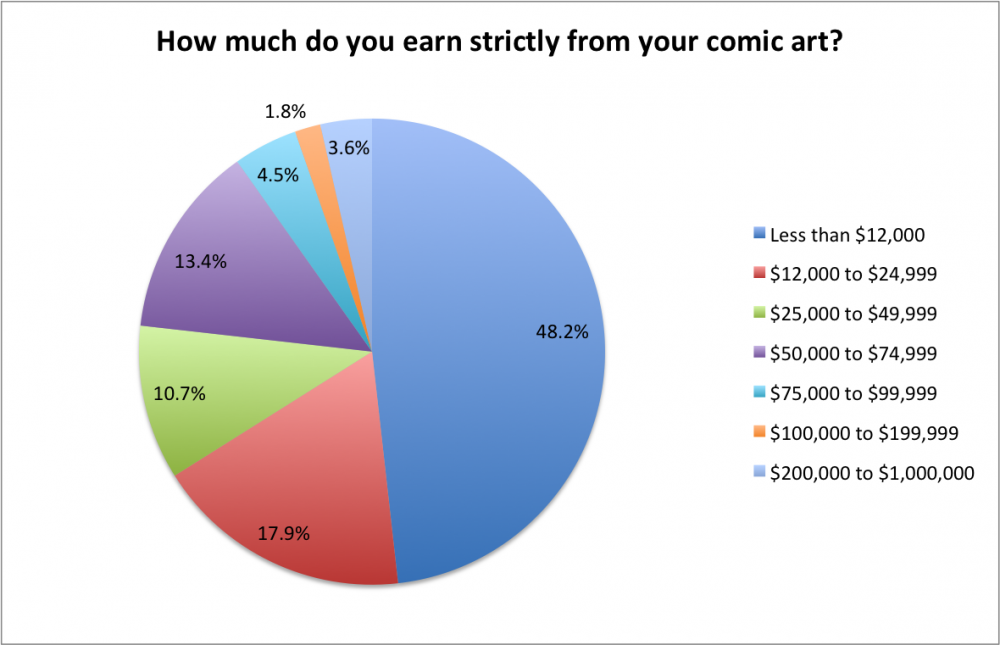
In Harper’s first annual survey of comics artists, the data supported Murphy’s postulation that about 50% of creators work at or below the poverty line, which is currently $11,770. 66% of Artists in Comics make Less than $50,000. Throughout the podcast, Murphy made several arguments that could explain the destitute state that most comics artists currently live in:
“I went to SCAD Savannah. I did not love it…they didn’t have a class about reading contracts. They didn’t have a class about investing or doing your taxes or saving money. They didn’t tell you to go to shows. Savannah is not too far from Orlando Comic Con. Why wasn’t there a bus put together? Is it insurance or is it the professors working there, many of whom had not had much experience working in the world? I think it’s probably the latter.
They teach you art and that’s great and that’s probably the height of most artists’ careers…their collegiate careers. You really do get to feel like a real artist because you’re doing it all the time. Once you graduate, a huge percent of you never ever work in that field again…
Creative intelligence and practical business intelligence are very different parts of the the brain, and it’s rare to see them mixed in one person.
Art is a business. There’s no doubt about that. While I was an undergrad, I lived in a building with an art professor, and when I saw him on the way to his studio, he’d tell me he wasn’t going to paint. He was going to “hustle.” Entrepreneurship is a skill that’s taught to students in business school and those students do exceedingly well. They go on to put their creative minds to work, forming thriving startups and going on to represent major corporations. Every fine arts major is an independent startup in the making, so why aren’t they learning how to manage themselves as a business?
If you look at the curriculum for fine arts B.As in major schools such as Parsons, Cooper Union, Rhode Island School of Design, and the aforementioned SCAD Savannah, you’ll find that none of them require degree pursuers to take a single business course. To be fair, this is a problem endemic to liberal arts curricula in general, but it’s an especially important topic for fine artists, who, as the data suggests, find themselves living out the “starving artist” stereotype.
Artists often graduate naive to the ways of the world. They’re book smart, but not street smart. Thus, according to Murphy, they often fall prey to predatory negotiating tactics:
Marvel and DC benefit by artists thinking they should be grateful. At Marvel, I’ve heard stories where there’s…there’s sort of subtle psychological work there…like “oh, we’ll give you the book that you want. What do you mean you want more money? We just gave you Deadpool.”
They sling you that. They absolutely sling you that.
This is a pretty damning statement. Marvel and DC, being the “big two,” set the standards for the industry. They have the furthest reach and the biggest collective sources of capital in comics. It’s hard to find a self-sustaining comics professional who hasn’t passed through one or both of their doors at some point. If they’re trying to undercut artists and prevent them from receiving a fair wage, how can they expect to make a living working for anyone else? However, let’s go back to the data to see if page rate averages support Murphy’s statement.
From Harper’s survey:
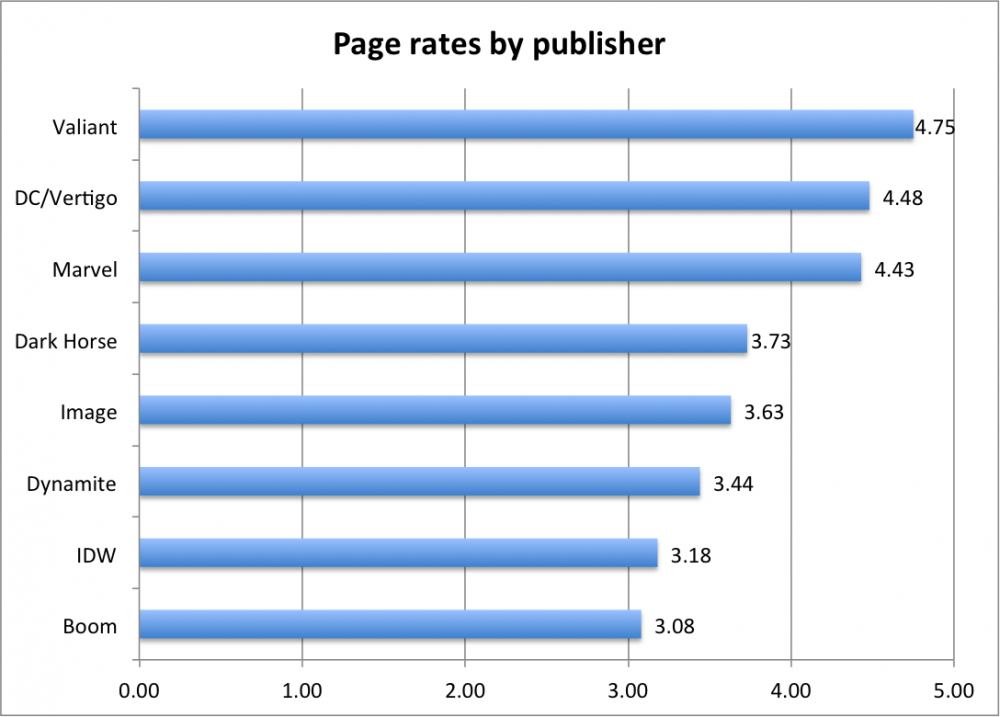
The scale works like this: 1 is less than $25 per page, 2 is $25 to $50, 3 is $50 to $100, 4 is $100 to $200, and 5 is more than $200. Anywhere in-between those numbers falls between the two spectrums.
To be clear, Harper’s survey isn’t representative of the industry as a whole, but his samples are capable of representing industry trends, and what they represent here indicates that no publisher (or in the case of Image, creative team), on average, pays its artists more than $200 per page. Obviously, some prolific artists like Murphy and Fiona Staples are likely making upwards of $200 per page on their projects, but they’re exceptions rather than examples of the rule. Recently, Heidi looked at a table of current common artist and writer pay rates compiled by No Mercy writer Alex De Campi, and noted that those rates are disturbingly similar to those she noted during her tenure as a comics editor fifteen years ago.
Over the last fifteen years, the collective inflation rate of US currency equates to 38.1%. If line art at a mainstream Big Two publisher averaged $200-$300 in 2000, the pay rate should look more like $276-$414. According to Heidi, lettering has actually been devalued over the past fifteen years, and although that might be somewhat understandable given the strides made in digital technology, it’s still deeply regrettable to see. The average page rate data collected by Harper doesn’t even reach the uninflated “common rates” that De Campi put together. This could be a fault of Harper’s sampling if he received many responses from the lower end of professional artists and few from the average or higher end, but even then, the fact that the lower rung of professionals might not be pulling $200 per page at DC is problematic, to say the least.
Ultimately, Murphy’s anecdote about the tactics the Big Two uses to keep costs down cannot be disproved. However, given their penchant for trying to get creators to sign away basic fundamental rights, I’m not shocked to hear him make such a statement.
Then again, when Murphy and Harper’s conversation reached the topic of truly successful artists, Murphy had this to say:
It’s heartbreaking when I see artists I admire fall off of it because of too much success.
Apparently, many artists who get deals from DC or Vertigo just stop producing at a professional pace. Murphy broke his wrist while meeting deadlines for his work with Scott Snyder on The Wake. Meanwhile, he laments the fact that he got flack while drawing the Mark Millar scripted Chrononauts because other Millarworld titles had been delayed due to late art. It’s true that Murphy has developed a stalwart reputation as a timely illustrator, but I have no interest in bashing artists who don’t meet their deadlines. Illustrator Nate Bellegarde holds himself responsible for what seemed like an interminable delay of Nowhere Men, but he had long been suffering from depression, as he detailed in a candid letter. Yes, artists should be held responsible for meeting deadlines. Comics are a business and it’s hard to expect companies to treat creators fairly when they aren’t putting out product. However, a good business takes care of its employees in ways other than salary.
Why aren’t publishers providing creatives with mental health benefits or any health benefits at all?
How can they entertain us when they can’t even take care of themselves?
Conclusion
It’s an incredibly interesting time to be in comics. In the 1990s, Vertigo challenged the notion that comics had to be face-bashing superheroic epics. Series like The Sandman and The Invisibles opened new horizons for the medium– horizons which Image capitalized upon as they entered their golden age in 2012.
However, the more things change, the more things stay the same. Although the comics industry is healthier than it has been in a long time, the audience of comics readers is still relatively small compared to that of film watchers or video game players. The value of the dollar cannot be understated, as it affects every aspect of the industry. It’s the reason why companies did and still do cheat creators out of money and rights. It’s the reason why page rates have fallen out of step with inflation so dramatically. According to Murphy, the lack of capital incentive prevents comic book publishers from hiring marketing teams that could bring in more money. The dearth of money is the reason why Murphy suggests that, beneath its shining veneer, Image occasionally appears to be as aimless as Vertigo.
Obviously, the solution is to find more money. The big question we have to ask ourselves is where that cash is going to come from. The solution obviously isn’t going to come from the Big Two undercutting creatives while raising cover prices on books, as that exploits the current readership instead of appealing to new readers. The solution may not come from large creator-owned companies who now have much more to lose by taking risks. It’s ultimately going to come down to us– the unknown readers, thinkers, creatives, and innovators who aren’t afraid to try new things and take risks.
At one point during the podcast, Murphy wonders why we don’t yet have a Netflix of comics. I’ve been wondering why we still publish floppy books in a world where most comics aren’t episodic and make much more sense when read in collected editions.
Wonder. That’s the key.


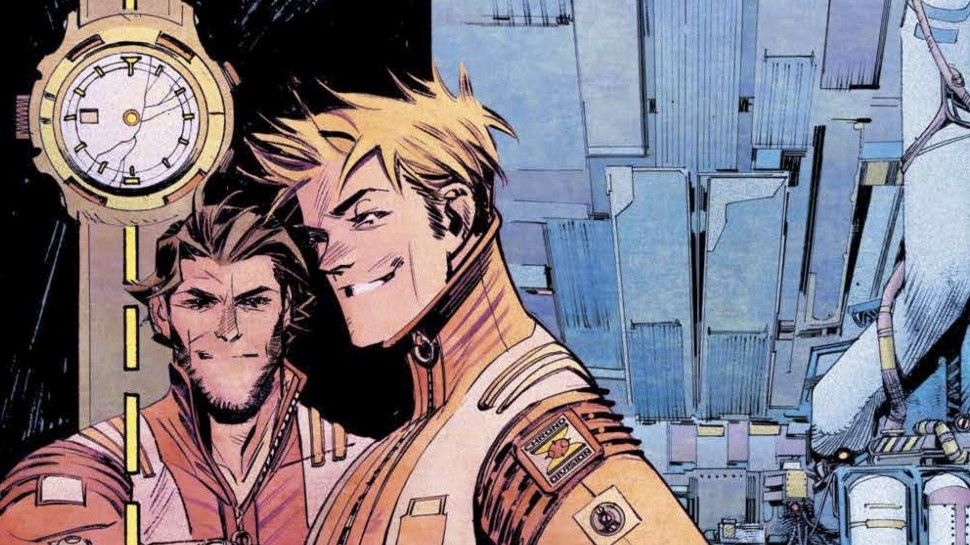
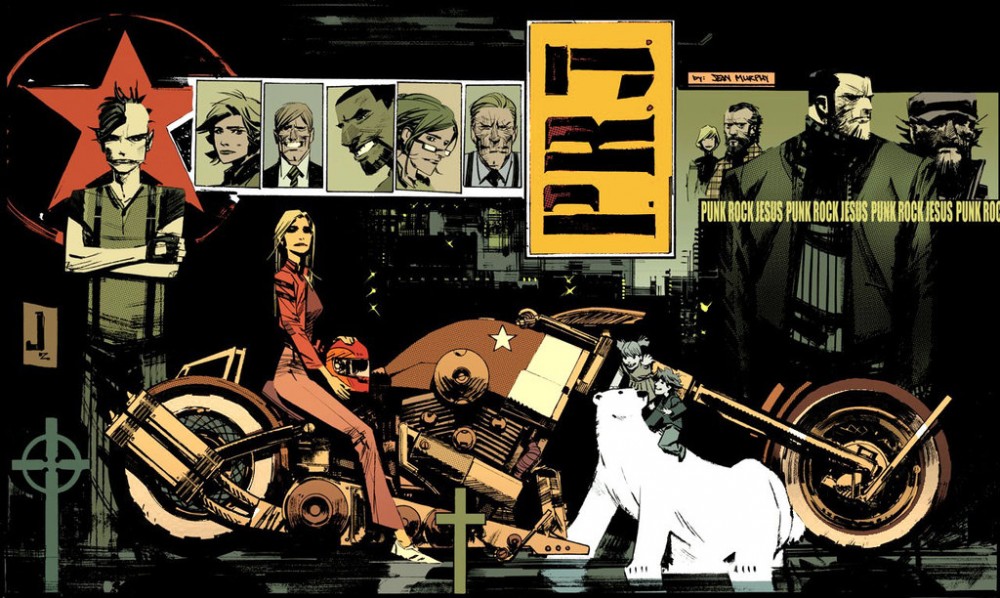
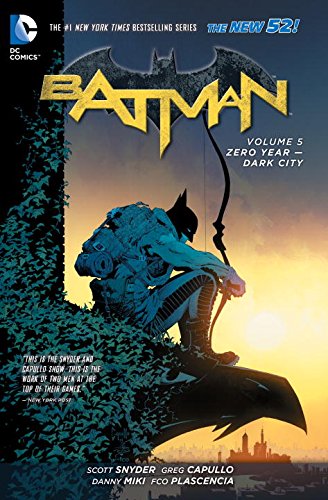
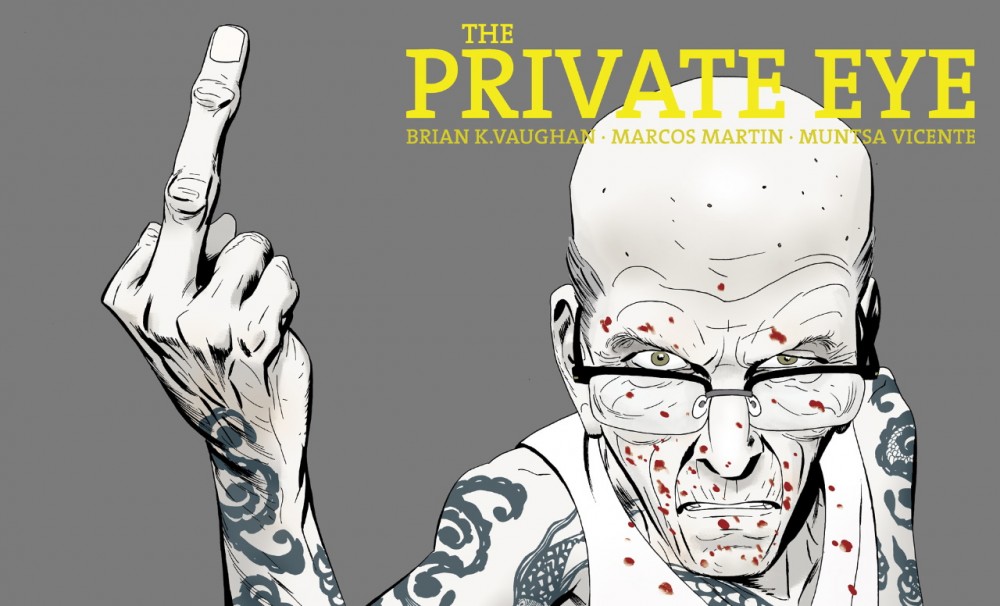
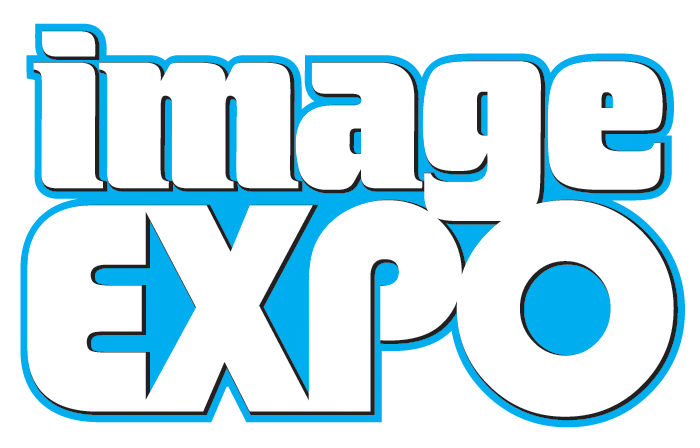
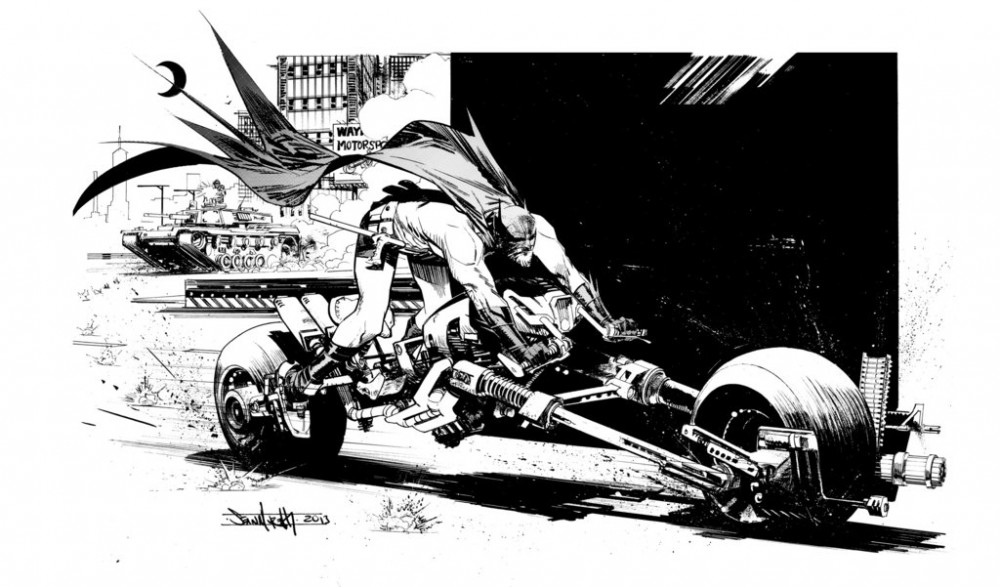
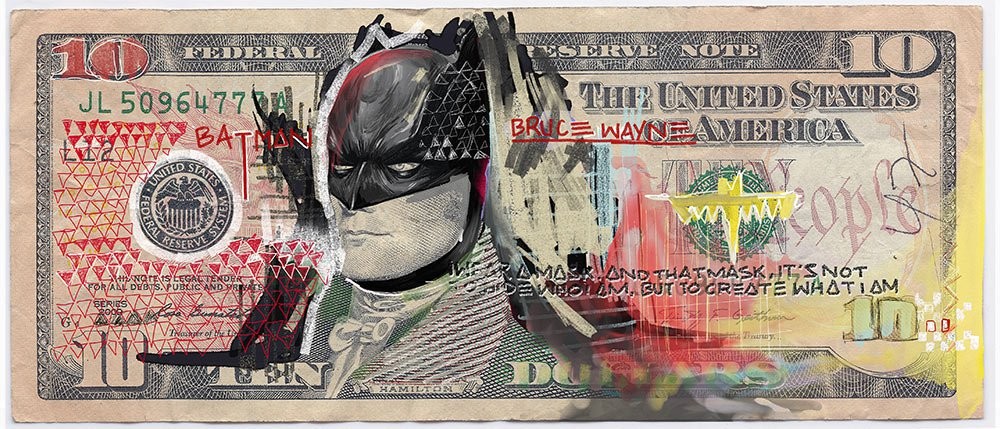
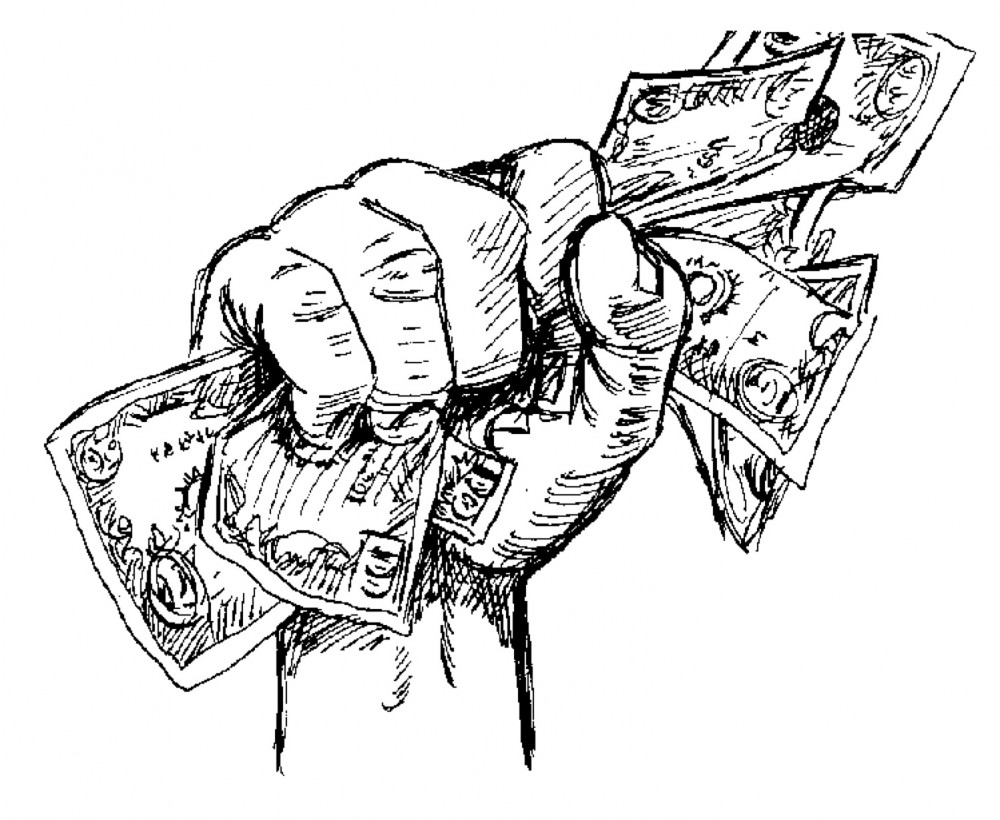

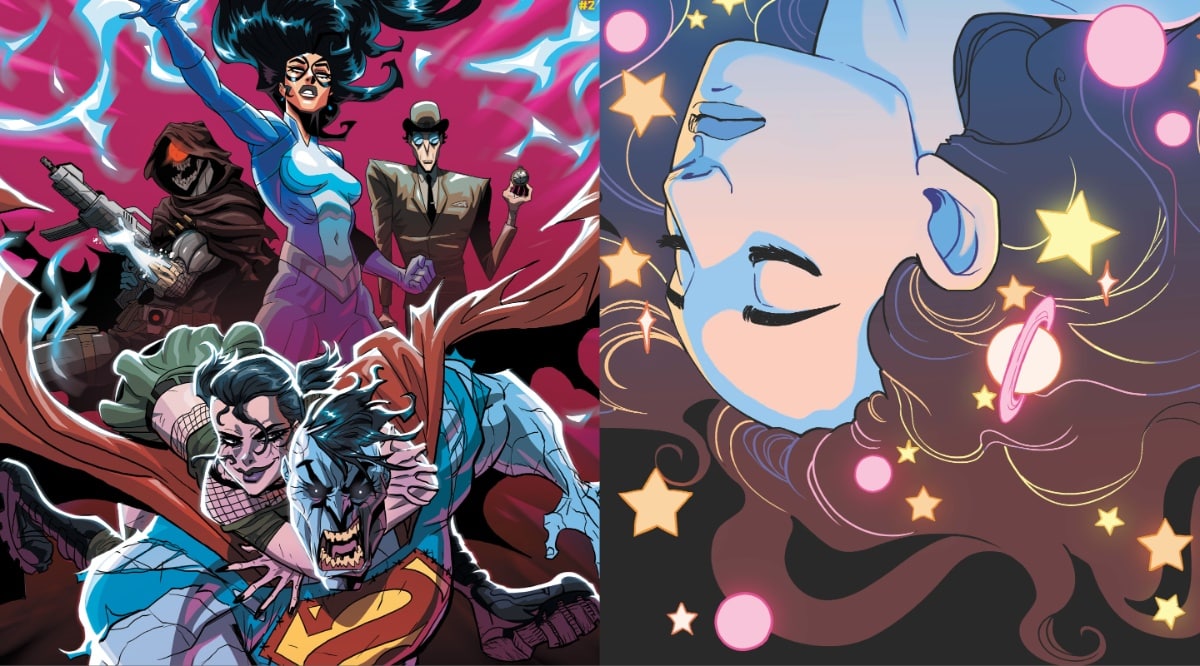



How does all if this rack up against comic publishers that are modeled more like book publishers (Fantagraphics, Drawn & Quarterly, or even Pantheon)?
And how does it compare to Asian, European, or South American comics I industries?
From what I can figure out, today’s comic market is a hybrid of yesterday’s comic READERS, comic COLLECTORS, today’s variant SPECULATORS, and a few new readers. To grow, the publishers need to see where new opportunities are, and go after that segment of the market.
“However, at some point around the time in 2010 when Robert Kirkman’s and Tony Moore’s The Walking Dead became a hit TV Show and Brian K. Vaughn’s and Fiona Staples’ space odyssey Saga blew up”
The first issue of Saga came out in March 2012. I know, it’s so well-established that it feels like it’s been around a lot longer!
The industry can only grow by bringing in kids, and no-one is trying to do that. Even Boom’s output of all those trendy cartoons (Adventure Time and all their ugly-cute hangers on) caters to adult cartoon watchers as much as (or more than) kids. Where are the Pixar of comics, who are focusing on story, originality, and recognisable characters? Scattered. If you had a company shepherded by Roger Langridge, Doug TenNapel, Ted Naifeh, Jimmy Gownley, Jeff Smith, Raina Telgemeier, and any other all ages creator capable of creating real original content and leading the pack instead of following it (again, ugly-cute, looking at you) it would be the greatest comic company ever. For kids. The “adult” Image fan will just scoff and scream “comics are serious literature!” So are kids books. And can be kids comics. Shutup, whiner-monkey. Go read Watchmen again.
Then you take those original comics, deliver them in a way kids will find them – which may or may not be digital, who knows how much parents police their kids internet time – and make them cheap.
Kids are our future. This is true in life, and life includes comics. Image’s ever growing stable of “adult” comics is just thinning out the numbers of a barely increasing target demographic. If you haven’t read comics by the time you’re 18, you’re going to be a harder sell to pick one up. Even harder to convert in to a repeat customer.
A few of the Inage books like Black Magick , and Axcend are out in the next catalogue. An effort to shorten the time between announcement and ordering. I think that objective of the last Rxpo was overlooked hear. Announcing a book a year early confuse retailers also.
Jacob:
It’s hard to measure with international artists. There are developed countries where you can live like a KING on $10k a year. I’ve met fulltime artists internationally with years of experience who live on $2k a year. And this isn’t necessarily a case of exploiting poor workers when companies hire THOSE people. I’m talking a life in a nice city apartment with heating and a full cupboard and a computer and internet and enough money to grab a few beers every night — and medical care is free and state run in many of those countries and college is as well. There are places in Europe where you could raise kids and have an amazing standard of living for $10k a year.
Meanwhile, there are cities internationally and many in the U.S. where $75k is neverending poverty and heavy sacrifices.
Some of the international artists making cheap wages are being exploited. But maybe they’re saving up for a plane ticket out too.
Inflation, from a cost perspective, is not uniform. And it’s not the same between currencies nor are different countries shooting for the same things.
In general, a country looking to export everything will manipulate their currency to spend further. A country that is looking to import will have a higher cost of living as will an area that pushes to concentrate highly skilled labor.
“Illustrator Nate Bellegarde holds himself responsible for what seemed like an interminable delay of Nowhere Men, but he had long been suffering from depression, as he detailed in a candid letter. Yes, artists should be held responsible for meeting deadlines. Comics are a business and it’s hard to expect companies to treat creators fairly when they aren’t putting out product. However, a good business takes care of its employees in ways other than salary.”
You do know that Image doesn’t “hire” the artists, they are technically independents? They arent employees of Image Comics, Image is technically hired by the artists. They arent salary workers. The production artists and PR people are salary, the artists and writers are not. I don’t think this is a good example for how the industry treats artists simply because Image treats its creators really well and they dont actually belong to the company, so….
Is this article purposely skipping over CMYK, Strange Sports Stories, and SFX, three different anthology series from Vertigo that have been showing off alternative voices + stories really well? Vertigo’s not as bright a star as it once was, but it’s got plenty of spark left.
As for a Netflix of comics: check out Scribd, Hoopla (see: public libraries!), Comixology’s all-but-announced sub service, and Marvel Unlimited.
Otherwise, enjoyed the article, keep up the good work!
Not sure we can judge conditions in this industry by any of this data. I’m not sure Murphy is completely up on his facts about the industry as a whole. He wonders why Marvel hasn’t done a netflix like comics offering…marvel has been doing Marvel Unlimited for 4-5 years or more. Scribd also offers graphic novels and other material in Netflix model. He had never heard of Vaughn’s Private Eye until the interviewer told him about it. I don’t hold this against Murphy, he’s busy making comics, not reporting on the state of the industry as a profession. But it does lead me to be uncertain of the accuracy of any of his “business” statements. I was very curious about his talk of artists who are promised a million dollars…but that was very vague.
The survey quoted is also not very scientific and thus may be completely misleading–for instance, it doesn’t distinguish how long correspondents have been doing pro level work, etc. Many try to enter creative fields and only some succeed, the rest eventually settle for other kinds of jobs–this is a truth in every field of creative endeavor, at least here in the USA…a cruel truth.
The “you should be grateful we’re hiring you” isn’t limited to Marvel and DC, or even to comics — it’s a pretty common HR negotiation tactic when you’re getting any kind of job anywhere. Not defending it (it’s pretty repulsive!) but it’s happened to me several times in my career. There’s a subtle psychology at work when interviewing/auditioning/trying out for a job, where the applicant is trying so hard to impress that when it’s finally successful, there’s a feeling that the employer is giving you a gift just by offering you a job. Everyone should go into a job negotiation knowing how much they should be compensated and prepared to explain why. Though I would imagine that when the applicant pool is hundreds of talented people who want to draw Spider-Man, it puts every artist in a weak negotiating position.
Oh, and Heidi, I think you should have a canned response to the, “No one makes comics for kids!” comment that you can cut and paste whenever it appears in a thread. :)
He raises valid points, but I just realized he may be biased towards the Expo judgements, due to Tokyo Ghost just being siolicated and was announced this time last year.
Marvel and DC will unfortunately always take advantage of people wanting to draw their charcters as a $ negotiation point. All these things are doomed to repeat without a comics Union.
Great article. Well written. Thanks.
As a self-pulisher running around the state trying to sell my books at Cons, I can tell you that the money just isn’t there. It’s a weird thing, as I am constantly in conversations with the public about how tired they are of reboots and sequels, yet I see them voting with their wallets at every Con. I have to compete with every other booth on the floor for each dollar that walks through the doors. Again, and again, I see people buying a $20 print of their favorite character or even a $5 vinyl sticker but they will baulk at spending $4.99 on a comic book. I’ve stopped cosplayers walking by my booth, and been told that they don’t read comics.
I believe that the entire industry is simply following in the footsteps of music and movies. Napster changed the way the music industry monetizes it’s product and YouTube and Netflix has done the same for film. Web comics, motion books, and services like Comixology are slowly gaining traction and it’s making it harder for new material to break through. It’s one of those weird catch-22 things in which it’s easier than ever to connect with a crew and make a book, but harder than ever to reach an interested public and get a return on investment. I’ve spoken with many creators at artist alleys over the last few years about these issues, and no one seems to have it quite figured out.
I would LOVE to pay my artists more per page, plus an incentive to finish quicker. The reality is that even if I’m consistently making table on gross, which I am for the most part, I am still losing money with every show that I exhibit at. Right now, my business plan is simply to get to the point where I’m breaking even. Early on, I realized that this whole business is a marathon, and not a sprint. Most of the advice that I got when I was was starting out, was to put my efforts elsewhere. I don’t exactly pass that same advice forward, but I would definitely say that if you want to get involved with the comic business, do it out of love for the medium, and not a desire to make money. Why? Because the money simply isn’t there.
If you love comics, think about what happens when you are only reading them for free from a website, or downloading them from a torrent. I know that there are many out there that do this, but please consider supporting the creators that you enjoy. If you download a torrented book, and like it, seek out the creator and order a graphic novel or T-shirt; anything that can toss a little bit of money their way… And if possible, make that purchase at your locally owned store, as the comic book shops are also in financial trouble most of the time. And when you go to that next Con, hold off on buying that replica of Mjolnir, and spend some time with the creators in artist alley or small press booths. Most of us just want to talk about our stories, and if you buy a couple books, it might just mean the difference between someone booking the next show, or getting out of the business.
Obviously, I don’t have the answers. I never wanted to be a publisher, but everyone is only looking for bankable, existing IP. It is a fascinating time to be involved with, or even reading comics. Hopefully all of this will settle into some sort of way to monetize our work, if only so that we can create more for our readers.
The problem is capitalism.
So can someone detail for me just how much an artist doing a monthly at DC or Marvel actually makes? If there’s twenty four pages of art in an issue (print, not digital) at two hundred dollars a page, that’s close to five thousand dollars an issue. And I’ve no idea how many hours of work are entailed in doing this work. So I repeat — could somebody give some examples based in reality please?
And it doesn’t sound like any publisher including Image ia really paying all that well…
Hey Thomas,
“Is this article purposely skipping over CMYK, Strange Sports Stories, and SFX, three different anthology series from Vertigo that have been showing off alternative voices + stories really well? Vertigo’s not as bright a star as it once was, but it’s got plenty of spark left.”
I’m a huge fan of these anthology series, actually. I think they’re very innovative and generally strong pieces of work. That said, they’re pretty much drops in a large and deep bucket for Vertigo. CMYK/SFX come out quarterly and haven’t led to any new ongoings thus far, which is what I was hoping would happen when CMYK started. There’s one story in particular (I think it was in Magenta), that has stuck with me to this day but hasn’t gotten any traction from the industry at large.
To get back to the point, Vertigo isn’t dead, but it’s definitely rapping at a foreboding door– and it’s understandable given that they can’t offer their series creators full creator ownership in the way that Image can. Vertigo is a beautiful dinosaur, but it is a dinosaur. I’d love to see it live on, but only time will tell if DC’s top brass and the creative talent feel the same.
————————————————
As for a Netflix of comics: check out Scribd, Hoopla (see: public libraries!), Comixology’s all-but-announced sub service, and Marvel Unlimited.
It certainly looks as though Comixology is going to be the “Netflix” we’ve all been waiting for, but that’s a very recent development and I think it’s still technically speculation. I’m super excited to hear an official announcement, though!
Totally agree about the need to teach business in art school. I went to art school at VCU and it’s a great program and I managed to find work off and on as a graphic designer for years. I developed a lot as an artist, but never quite got the hang of making a living as an independent artist despite many attempts. I recently got an MA in Illustration from FIT, but that didn’t help much either.
I recently started studying for an AS in accounting at LaGuardia Community College and just after a few classes, I can clearly see how much I didn’t know about business and the big gap in skills necessary to be commercially successful. Artists are essentially independent business-people and need to learn things like accounting, finance and marketing like any other business person would.
Did Vertigo ever offer complete ownership to creators? I’ve always thought that original series like The Invisibles and Preacher were wholly owned by the creator(s), but maybe I’m wrong about that. If Vertigo did offer it at some point, when did the contract change? Just curious.
@Cat
In theory, an artist should be able to do one book per month, so roughly 50k a year. Before taxes. Few can keep up the pace though.
“Meanwhile, Harper and Murphy note that DC takes around 7 months to collect a set of issues and put out a trade. While I’m sure there was a sound business reason for this time table at some point, the market has changed dramatically within the short five year span I’ve been reading comics seriously. There’s no reason for Batman trade readers to be lagging a full half year behind the floppy readers.”
Having been reading over twenty years, the last five years has seen some change, but not enough to make the existing tab format the universally preferred , if anything, I think they may be outdated already.
Unless I’m misremembering, retailers and pro’s have written before that whilst quick trades can boost up Image’s ongoing series sales, quick trades at Vertigo lead to people waiting for the trade, which cut heavily into their opening ongoing sales numbers, so if it didn’t get quick buzz (and 90% of Vertigo’s series, even the great one’s, had lesser first arcs) it was doomed from the outset. Unable to get people back to floppies, they tried launching more OGN’s, but they didn’t do well either. (And side-stepping from this issue, it seemed to be the changes in contracts that chased creators from Vertigo, rather than tpb scheduling).
So until Batman shows he will consistently make as much money for DC from trades as he will from singles, it’s unlikely they’ll speed up the production – recent history has it as not in their interest to do so, rightly or wrongly, that’s why there is a reason for DC to wait six months on Batman trades.
That would be DC’s logic at least. It was at the time of the launch of the nu52, when Didio was talking up the singles. I tend to agree, as I’ve seen one size fits all publishing plans fail many times – sometimes the competition did catch lightning in a bottle and it’s better not to copy them.
That said, I was content waiting six-twelve months for a hardcover/tpb of the full Batman: Zero Year storyline, (I was 50/50 on whether I wanted Greg Capullo art enough to have to read another sleepy Snyder script) and then DC put the full arc on comixology for 99c an issue, less than six months from it’s conclusion. Which makes debates about singles and trades somewhat less pressing. And as that cost me twelve bucks, Marvel app users are laughing their asses off as they only pay ten bucks a month for most of the Marvel catalogue, making the just begun debates about trades and digital less pressing!
Just going to assume the page rates graph only applies to pencilers, since there’s no way inkers and colourists are offered that much by the lower half of the publishers on that graph.
Farrago Comics COULD become the Netflix of comic book sites and DOES support serialized story-telling. I just released Kid Lightspeed there and am looking at other properties too!
The sad this is Sean Murphy is a d-bag that will probably not work in comics for much longer. Everyone says he’s a-hole except for the person currently working with him. Part of business is to know the facts. His opinion comes across as very biased. All the publishers try to treat their talent fair. The “You should be grateful” story is bogus. Just because he heard a story of one editor saying something to one penciller, doesn’t make it a universal fact.
The issue with this article is that it is negative and biased. You do not have to be a starving artist/writer your entire life. You can make a lucrative career out of your passion. Every problem addressed is an issue in other industries as well. People just find away to make it work and be successful. If you don’t want to play the game then go into business for yourself. Get help mastering sales and finding your customers.
As an outsider looking in it appears the whole industry in stuck in a box and you would think that with all the creative minds at play somebody would figure a way to think outside. I have often thought “if I could draw better, if I could write better ” this is what I’d do. Funny thing is, what I’d do never included the box. I almost feel I’ve wasted my ideas because I never act on them. That would always include others. The problem with that is those I would need to shore up the lack of adequate talent reside within a 4 sided poky of their own making.
What the hell do I know…
George Hirvela
We have a Netflix of comics, and it comes from Brazil. They are in negotiation with comic publishers in the USA, Europe and Japan. I truly believe they could be the next big thing.
http://www.socialcomics.com
The annual salary thing is a bit deceiving. For example, most of the jobs I’ve had since 1974 have included medical, dental, a guaranteed 40-hour workweek, overtime and/or comp time, paid vacation, paid sick leave, sick days or sick hours, cost-of-living increases, and a retirement plan and/or a 401k. In some cases, I also had seniority, tuition assistance, stock options, and other benefits. By contrast, freelancer get almost none of these. They get piecework, and occasionally, residuals.
I want to chime in on this with a fair amount of experience in the field. I started working for DC in the summer of 1980, when everyone seemed to believe the comics were not long for this world. Instead, the 80’s were a time when things improved for most of us in the field, from the introduction of royalties, to the character equity DC gave us for character creations. The direct market overtook the newsstand during that time, and royalties for direct market books were better than the newsstand percentages. Rates went up, and I believe creators benefitted from the competition that came from smaller publishers offering better ownership deals. Anyhow, in my experience, the creators have generally suffered since the loss of the other comic distributors, which made Diamond a monopoly. Around that time, Marvel and DC seemed to make a point of sending more staff to conventions, and less creators. It was kind of a corporate shift. In the 2000’s, trade collections have been less of an income stream for me, as formats changed, and royalties were still calculated for the previous direct market model. The big companies paid royalties on total copies sold, but the numbers of copies dropped as they flooded the bookstores. Another change has been with the “Showcase” or “essentials” phone book volumes, which were sold cheaply with five times the content, printed for pennies in China. They are profitable for the big two, but produce tiny royalties. Same with “Omnibus” editions– 100 dollars and over, with 400 pages, they sell in small numbers, and generally produce royalties you can buy a coffee and pastry with. Now, we have digital, where the royalty structure remains basically the same as the print editions, despite no printing or shipping costs. And they are sold cheaply. My checks from DC reprint editions used earn in the 17-20 K for me per year, based on 30 years worth of material. Now, with the collected editions being sold as digital editions, further eroding print royalties, the money is half of the former numbers, despite the increasing number of digital sales. In the same time frame, page rates have stayed the same for me, or gone down. I drew a single page for Marvel in the recent past, and was paid 100$ less than my previous marvel rate. I did it because it was a single page I had already agreed to draw, but I was insulted, nonetheless. So, anyhow, I think Sean makes some good points here. Of note is the comment on art schools not preparing artists with even minimal business education. A young artist is vulnerable to many traps, from signing away rights, to undervaluing their work. While I enjoyed my time working on established characters owned by my employers, I am not entirely sure I could have had the same success starting out in todays market. For any young artists or writers reading this, I would say this– work for hire, at terrible rates, is not worth your sacrifice. If you’re going to starve anyway, you should do so on your own creations, where at the least, you will own the rights to repurpose the work down the line. Bet on yourself!
>>>Bet on yourself!
Yep. 110% true,
Well, far be in from me to contradict Jerry Ordway or Heidi MacDonald (two people who’s opinions I greatly respect, and who have got the history to back those opinions up), however I have to wonder if anyone is considering the fact that it is possible to make one’s name at “The Big Two” and then take that name status to greater heights when going out on one’s own with a creator owned project. Having spent the past 30 years down in the lower portion of the graph provided in the article (and thanks for that income breakdown, BTW) and only recently managing to climb up in fan status by taking some of the “demeaning piecemeal work” (not casting aspersions on anyone on either side of this debate, just mocking myself really) that some of the mid-range publishers have had to offer–I believe there is some validity to the following idea: take what work you can get. I have bet on myself and found myself struggling. I have bet on publishers and found myself struggling still. It is for the love of the medium that I have continued to work. It would be great if art schools would teach basic business skills, but as Scott Adams has pointed out, “experience doesn’t work like that”. So we all find ourselves struggling to make this medium we love a better thing–thank you all. I appreciate every word. It’s gratifying to know that so many others care as much as I do.
Comics industry IS RACIST PLAIN AND SIMPLE. lack of diversity, lack of inclusions from other racist. just For the Record Karen & Shelly made it a Regular habit not to hire minority for creative owned projects maybe they was the Colorist or Inker. I know I saw them Kill appointments, Or Reject minorities when they showed up at the offices. I saw it all. I don’t talk about my 10 years at DC I left because there was 2% diversity (being very generous) On Staff and Less for freelancers. Most Don’t talk about this because of fear of returbution but i have no such fear because i Have Zero Desire to be in the industry. The things i say is 100% factual only people who denied it are the ones who benefit from it. I read the forms when posted on Fb from friends who still believe. I grew up made real money, earned real respect and was accepted for my skill and effort.
This guy hit the nail on the head (see below)! You have to appeal to kids AND grown ups. You have to be simple AND timeless. Think Charles Schultz and Peanuts – philosophy and common sense in a simple package = timeless! Think videos!
Caanan Grall says
07/06/2015 11:10 PM AT 11:10 PM
The industry can only grow by bringing in kids, and no-one is trying to do that. Even Boom’s output of all those trendy cartoons (Adventure Time and all their ugly-cute hangers on) caters to adult cartoon watchers as much as (or more than) kids. Where are the Pixar of comics, who are focusing on story, originality, and recognisable characters? Scattered. If you had a company shepherded by Roger Langridge, Doug TenNapel, Ted Naifeh, Jimmy Gownley, Jeff Smith, Raina Telgemeier, and any other all ages creator capable of creating real original content and leading the pack instead of following it (again, ugly-cute, looking at you) it would be the greatest comic company ever. For kids. The “adult” Image fan will just scoff and scream “comics are serious literature!” So are kids books. And can be kids comics. Shutup, whiner-monkey. Go read Watchmen again.
Then you take those original comics, deliver them in a way kids will find them – which may or may not be digital, who knows how much parents police their kids internet time – and make them cheap.
Kids are our future. This is true in life, and life includes comics. Image’s ever growing stable of “adult” comics is just thinning out the numbers of a barely increasing target demographic. If you haven’t read comics by the time you’re 18, you’re going to be a harder sell to pick one up. Even harder to convert in to a repeat customer.
Kids are more interested in manga. Because they read so much manga, they find it difficult reading left-to-right Western comics.
Comments are closed.